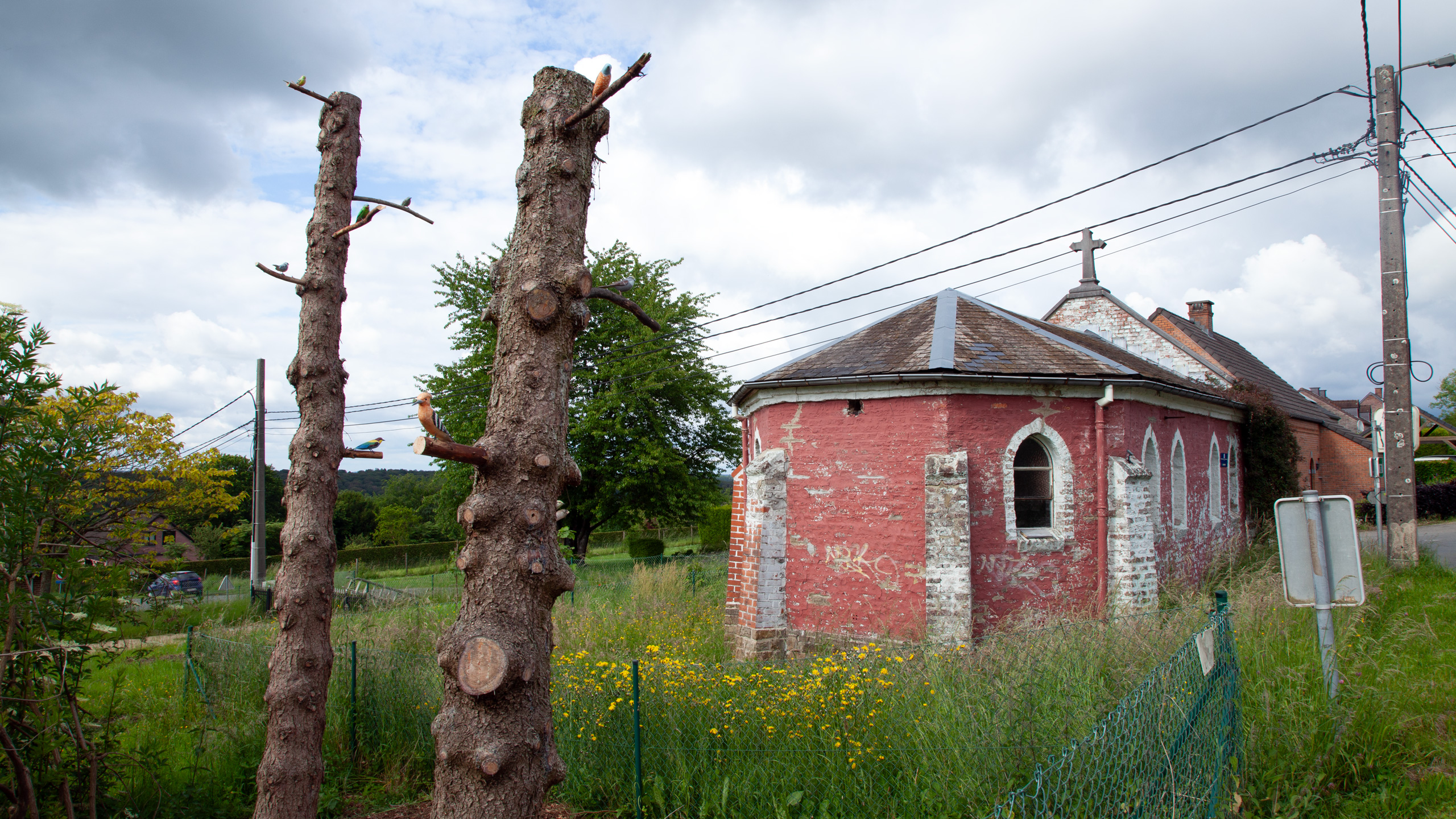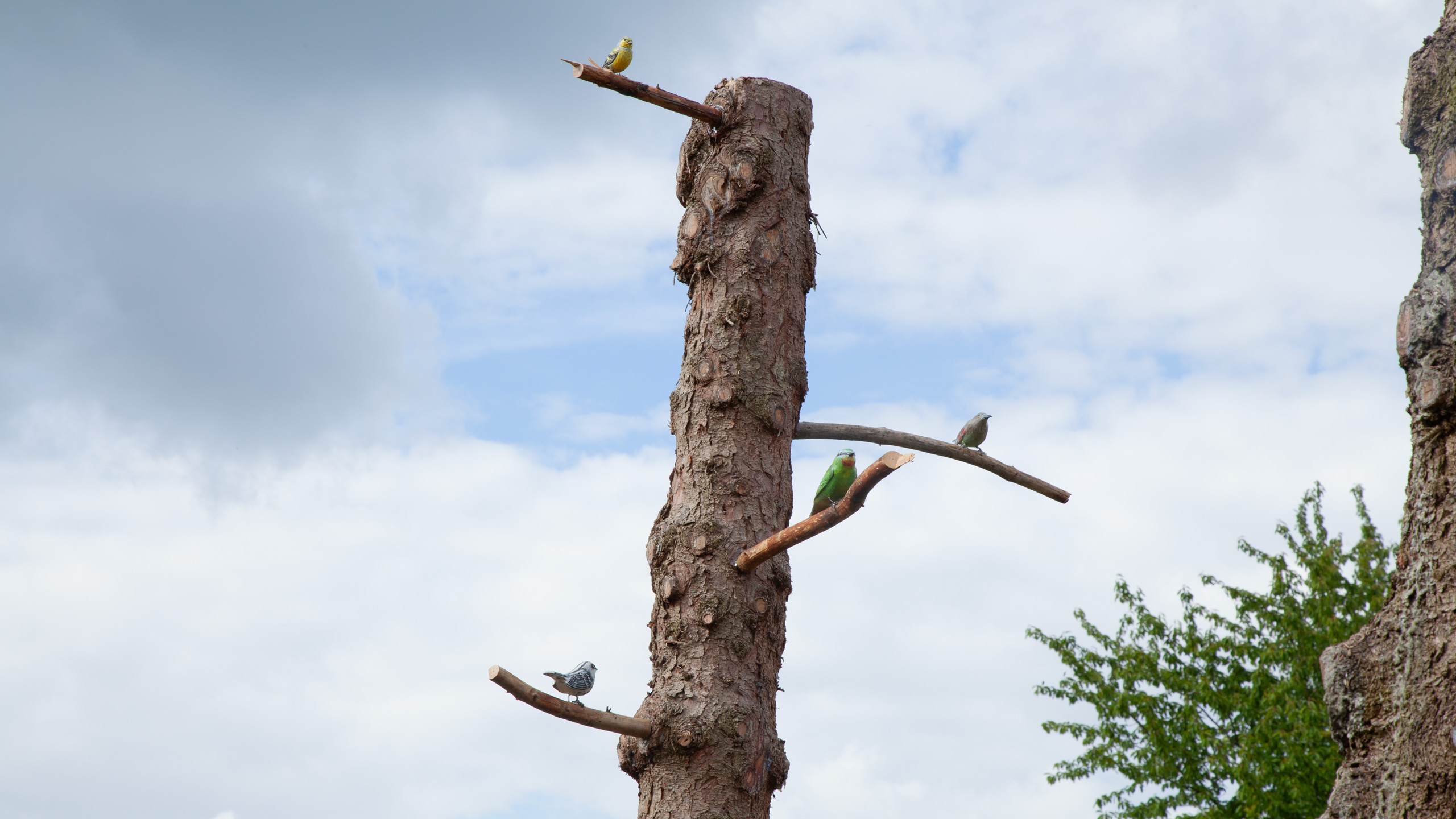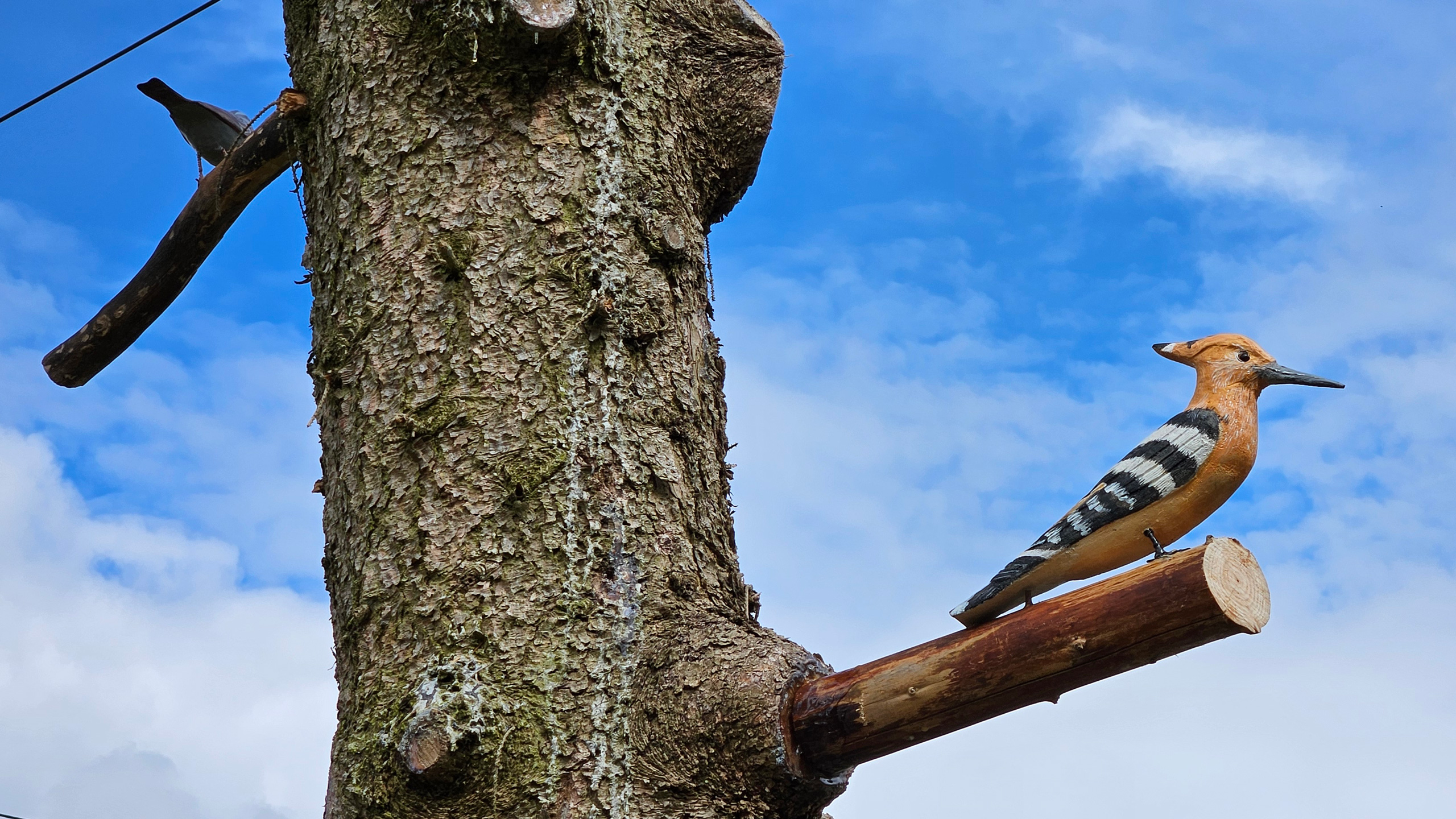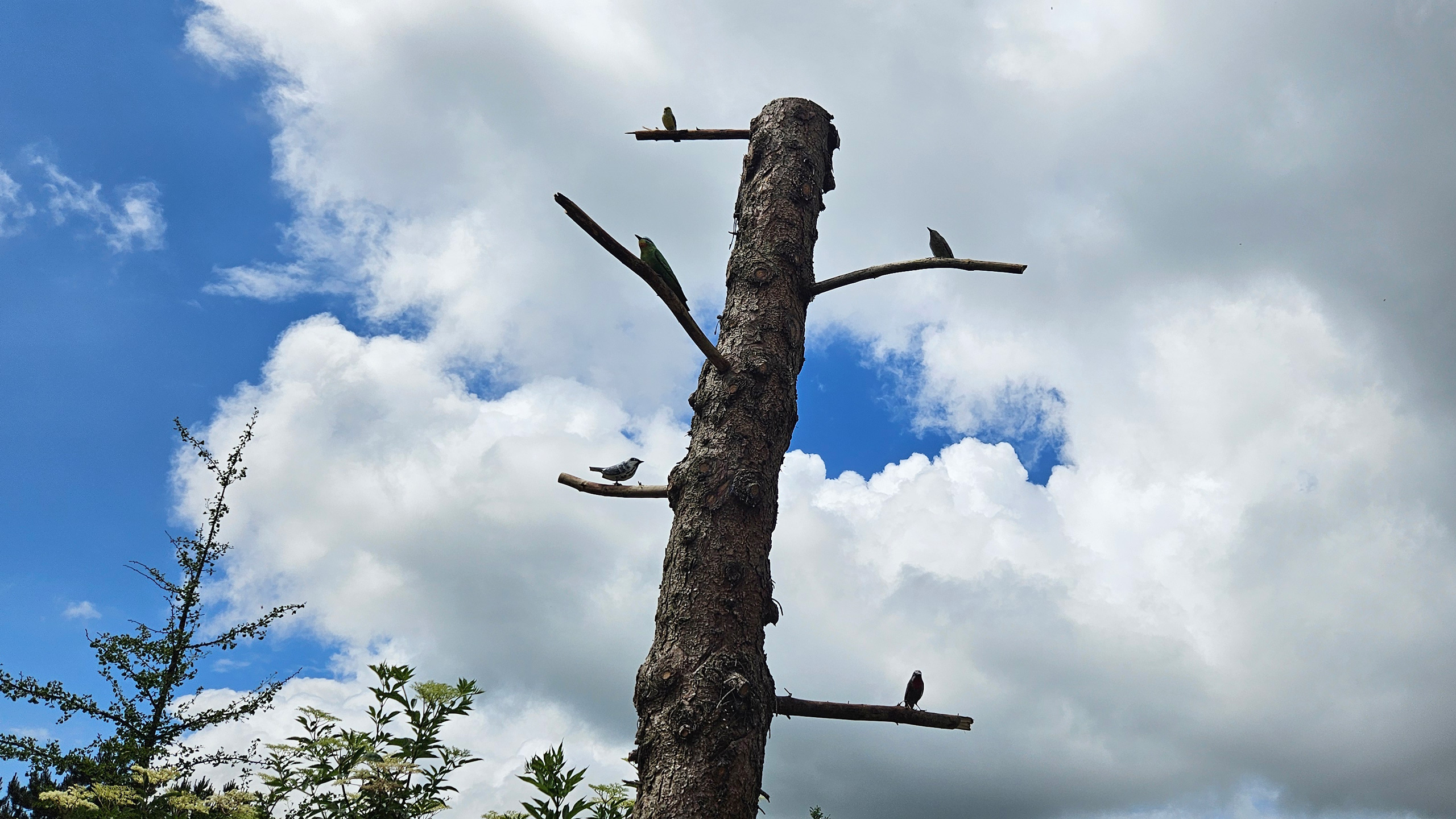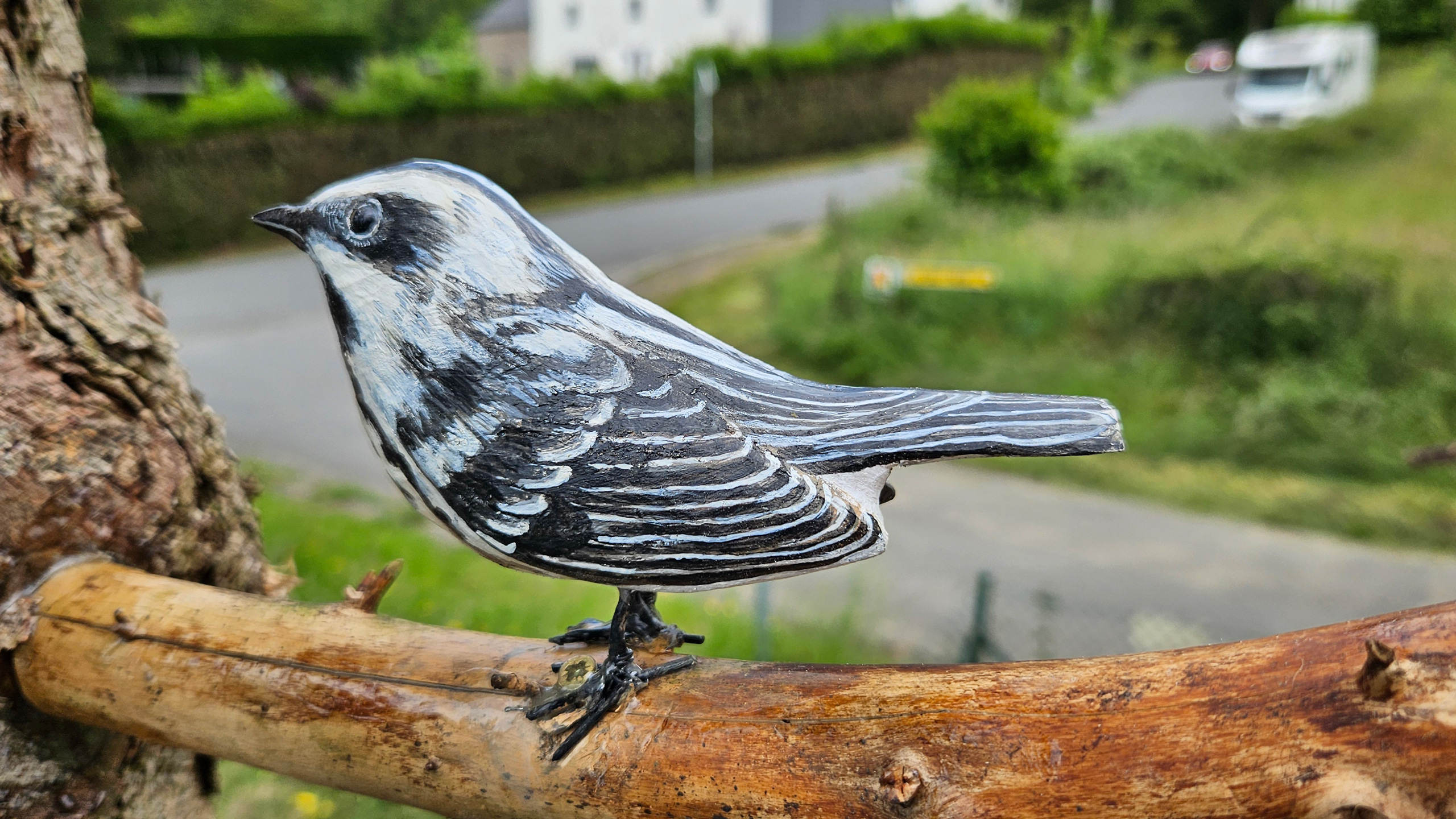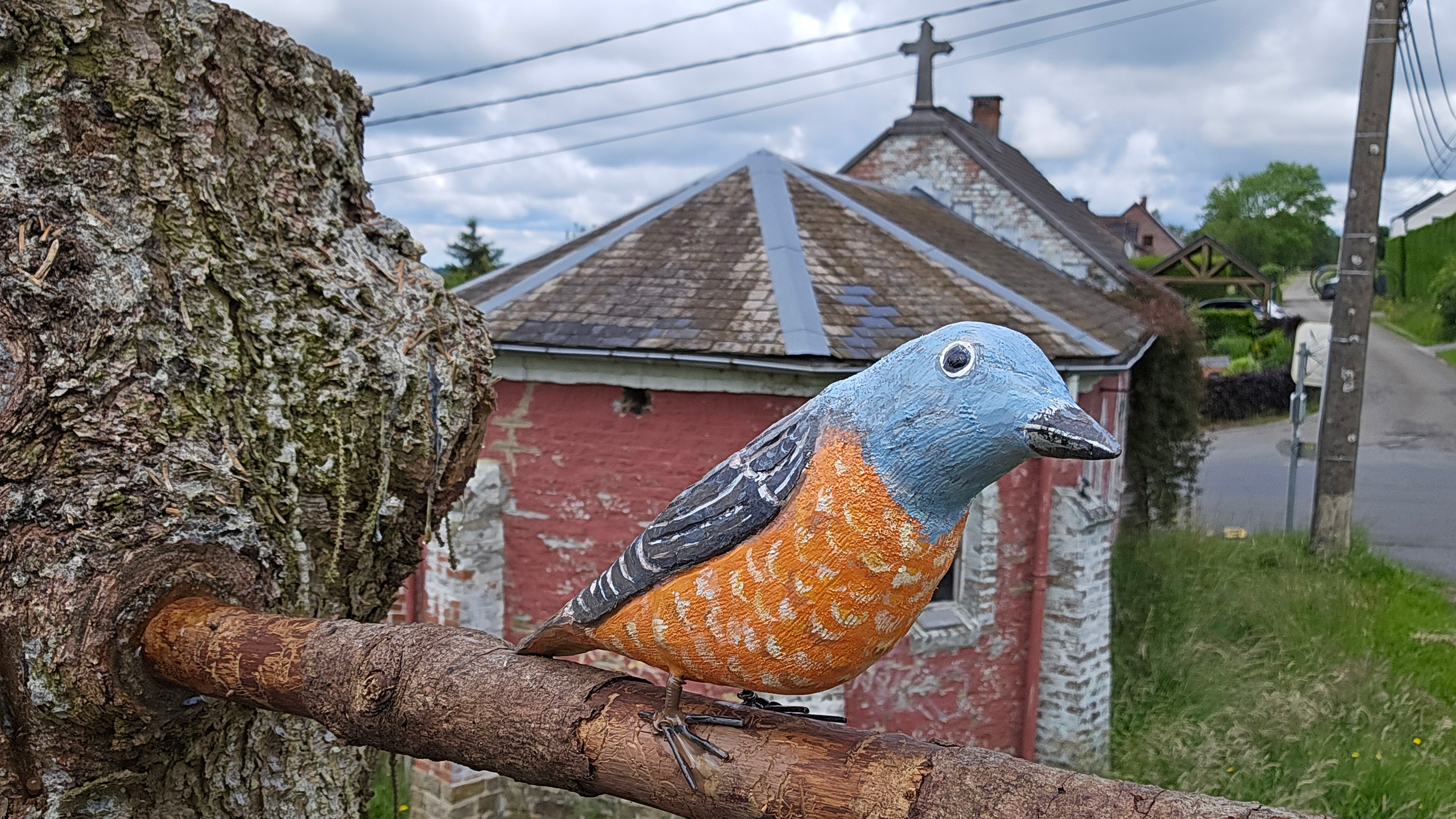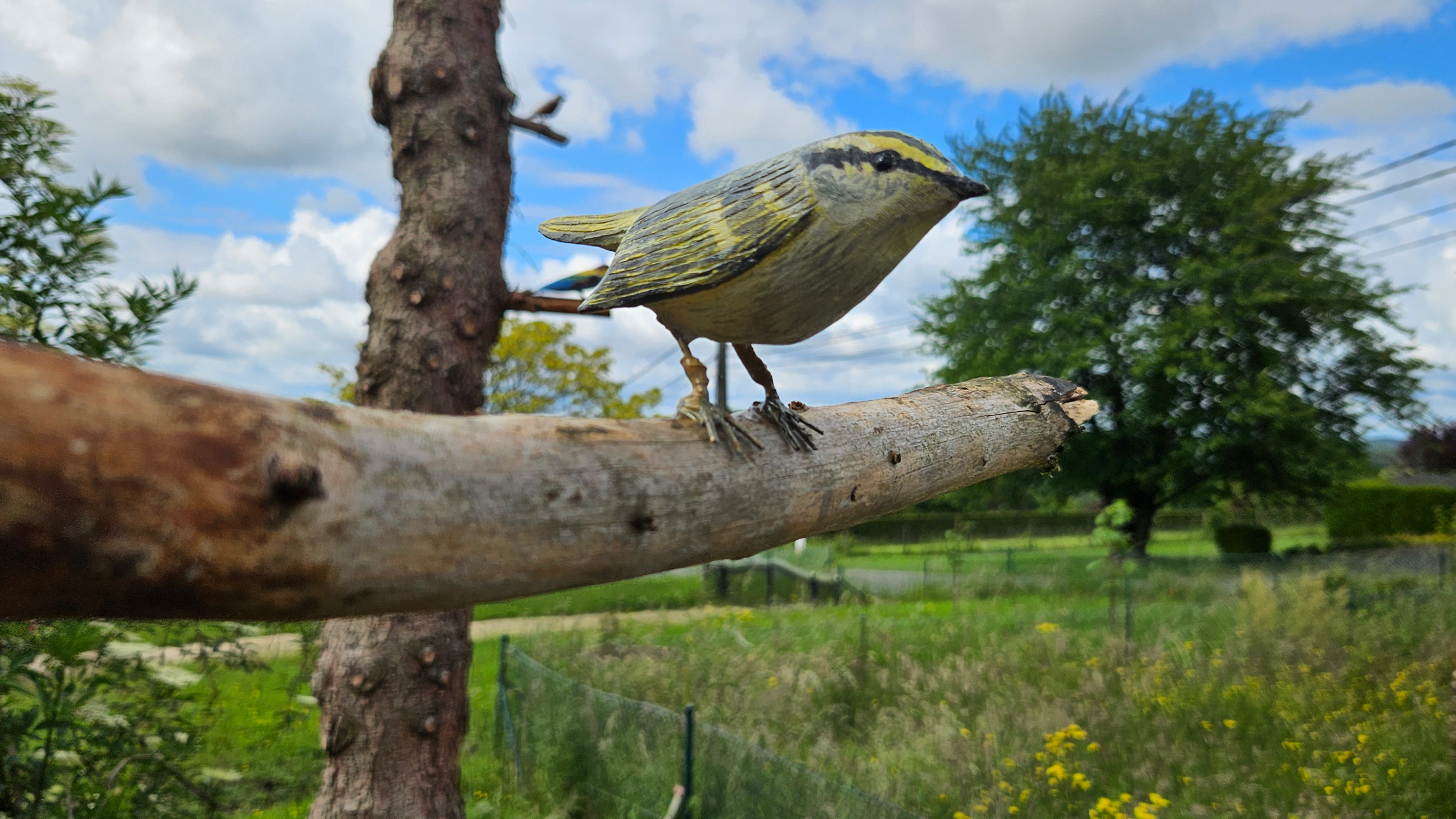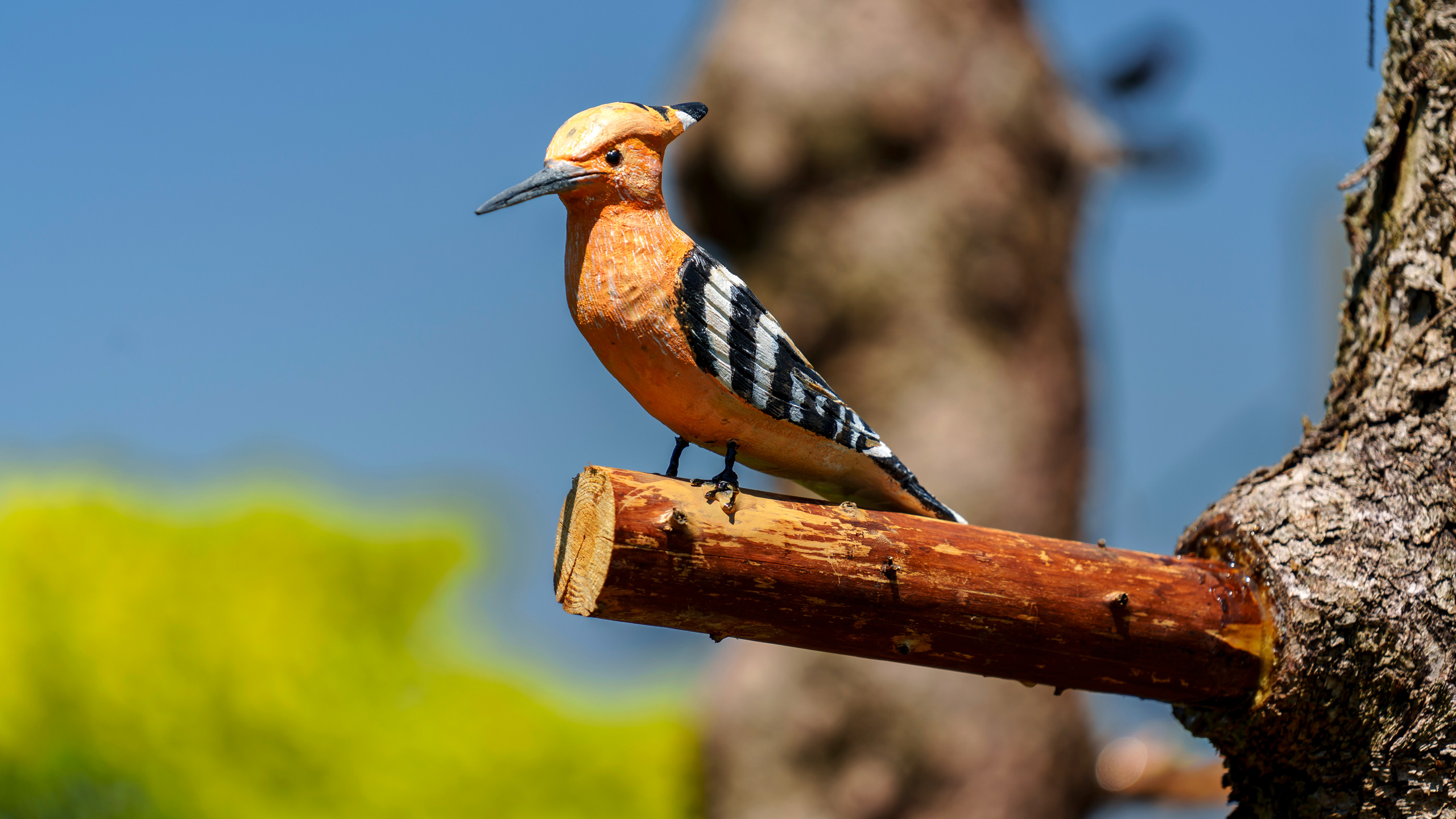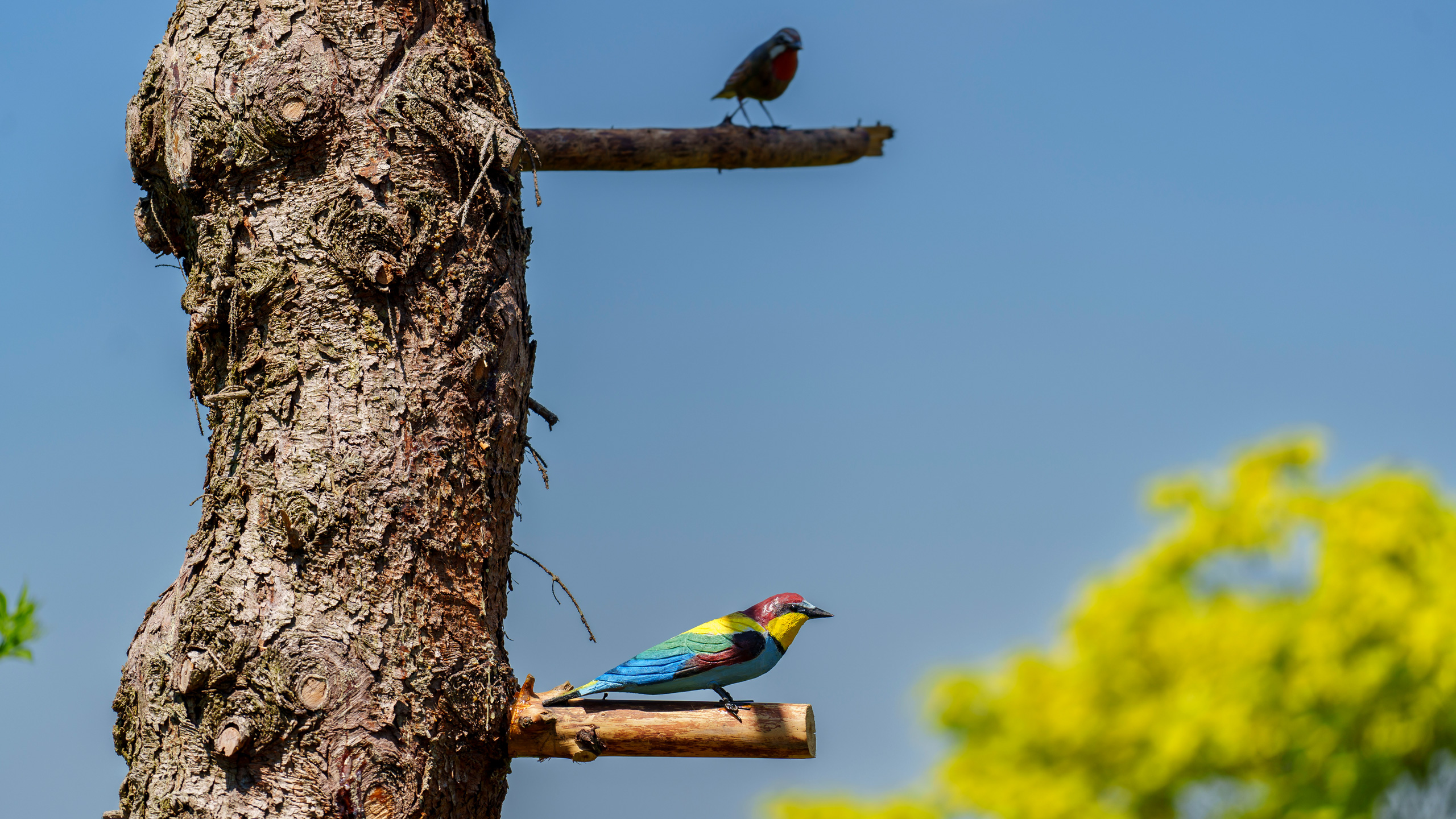(French for Concert of Birds )* focuses on the phenomenon of vagrant birds, an occurrence in biology whereby an individual animal appears well outside its normal range. Vagrancy has increased significantly over the last years as species try to find new escape routes from human-driven climate change and widespread habitat destruction. Instead of staying put and facing potential extinction, a few solitary pioneers scout new habitats as their former homes become unliveable. The work consists of wooden reproductions of birds that were discovered during recent sightings in Belgium and installed on two dead pine trees. The work is situated next to a small chapel of Saint Christopher, the patron saint of travellers. The work is accompanied by a sound piece consisting of the bird songs from all the different species, which can be activated on site by scanning a QR code.
The sculpture include the following bird species :
Wallcreeper: found mainly in the mountains of southern and eastern Europe and Asia. This species is increasingly being noticed in Belgium, especially on the rocky cliffs in the southern provinces. Recently, one was observed in Dinant.
Pallas’s leaf warbler: breeds in Siberia and then migrates in winter to southeast China. Most of them neatly follow this migration route each year, but they are increasingly found in Western Europe. It was first recorded in Belgium in 1967 but it has become more common with hundreds of sightings each year. Mostly along the coast.
Citril finch: common in the mountains of southwestern Europe from Spain to the Alps. A few sightings per year, most of these records come from the southeast Belgium.
Siberian rubythroat: In 2019, a cat in Haillot, caught this very rare bird, immediately accounting for the first Belgian sighting of this species. The bird normally breeds in Siberia, and only exceptionally flies towards Western Europe.
White-throated sparrow, breeds in northern North America and winters in the southern United States. It was seen in Knokke-Heist in Belgium for the second time ever.
Blue-cheeked bee-eater: migratory bird common to North Africa, the Middle East and Central Asia and travels to East Africa in winter. The species also turns up as a wanderer in Europe. In 2017, it showed up in Belgium for the first time near Antwerpen.
European bee-eater: breeds in southern and central Europe, northern and southern Africa, and western Asia. The species is strongly migratory, wintering in tropical Africa. It occasionally breeds in northern Europe. For the first time in Belgium in 2020.
Black-and-white warbler: songbird that accidentally reached Belgium via wind currents from North America. It was spotted in Knokke-heist in 2023 for the first time on record.
Common rock thrush: found only in the high altitude regions of southern Europe. North of its range, the species is a rare wanderer, occasionally passing through during its spring migration northward. The species breeds in southern Europe and then in a broad band through western and central Asia into China, usually above 1,500 m above sea level. All populations migrate to sub-Saharan Africa in winter.
Eurasian hoopoe: widespread in Europe, Asia, and North Africa and northern Sub-Saharan Africa. Those breeding in Europe usually migrate to Africa in winter. In Wallonia, the species was a regular breeding bird until 1980. Only in 2009, thirty years later, could another breeding case be recorded in Chimay.
* The title ‘Concert of Birds’ comes from a 17th century painting genre that originated in Belgium. The paintings show a colourful diversity of domestic and exotic birds perched awkwardly on top of branches. What was once a just an imaginative décor has turned into a worrying sign of the climate crisis and its disturbing effect within the biosphere.

